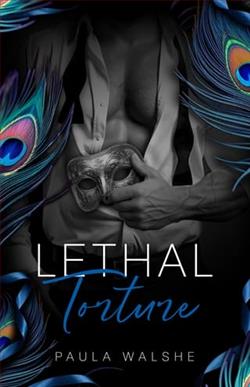Page 45 of Laird of Twilight
“It’s a handsome room, the library,” he said, trying for conversation, strolling closer, despite her coolness.
“It is,” she agreed.
“I have been wondering how many books are in the collection,” he ventured. “I should look through my grandmother’s papers to see if a count was made.” He looked up at the soaring bookshelves, separated by tall windows. An Oriental carpet spanned the distance between him and Elspeth. She turned.
“The library, indeed the house, is a place to protect and preserve. You and your kin must be proud of it.”
“Aye.” He wondered again if selling was the wrong thing to do after all.
“It is a place to keep forever in a family.”
“Indeed.” She was doing it again, following his thoughts.
She paused by a glass display cabinet. “Do you know much about these stones?”
Glad of the excuse to be near her, he came close to peer over her shoulder. He had noticed the stones earlier but had not paid much attention. He should have appreciated them more, as she was doing. “They are the sort commonly found in this area. Mostly quartz. That one is a very nice cairngorm, and this one, here, a good chunk of red jasper.”
“Why are they here? Did your grandmother collect pretty stones?”
“My grandfather collected stones and odd objects he found on the grounds, and had this case made to display them. I remember playing with some of the stones when I was a lad and collecting bits when I went for walks with my grandfather. Outings with him made my sister and I want to study nature. So I became interested in rocks, and my sister now studies fossils particularly, imprints in the rock of shells and so on from ancient ages. Harder to discover than rocks,” he added with a smile.
“And this one?” She pointed at a large blue stone.
“Interesting. I have not seen that before.” The stone was a sliced specimen of rock with interior crystals, this one cut to reveal a circular pattern of wavy lines in tones of blue. “They call it a Scotch pebble—agate, it is. This is a beautiful specimen. We think agates formed when pockets of gases and liquids dried and hardened, forming rings of colored crystals. Most often they are found alongside quartz, embedded in volcanic rock. I have not heard of many agates found in the central Highlands here, so it is interesting indeed if this one is local. Blue agate is quite rare,” he added thoughtfully. Something tapped at his memory.
“The blue almost glows,” she said.
“It has extraordinary luminosity, I will say. I wonder if it came from Struan grounds or elsewhere. I wonder when it was added to the collection.”
“Could we look at it more closely?”
He rattled the glass lid, which had a bronze latch. “I do not know where Mrs. MacKimmie keeps the key. When she returns, we can open it.”
“I will not be here then,” she said. There was a little tension in her shoulders, in the nape of her neck. He wanted to ease it away, flexed his fingers, went still.
“Then you must return for a visit,” he replied. “Bring Mr. MacArthur, of course.” Then he recalled what she had said. “Your grandfather lost a valuable stone here. Could it be this one?”
“It could be. I would like to look at it more closely.”
As she leaned toward the glass, he did too, his arm brushing her shoulder, the pressure warm and pleasant. He glanced at her, savoring the purity of her profile, the blush along her cheek, her lips. She glanced up, gray eyes clear under a little frown.
“Tell me more about the stone. About Scotch pebbles.”
“To my knowledge, Scottish agates are usually found in the Midlands, in Perthshire, in the Isles, and a few other places. It is a type of chalcedony or quartz,” he went on, “probably formed by cooling gases during times of tremendous heat in the formation of the Earth. They can appear in beds of sedimentary rock, granite, under red sandstone layers, which indicate very ancient eras when there was the stupendous amount of heat—volcanic—required to create such deposits. But agates are not generally found near the Trossachs, at least so far as scientists know.”
“I have seen others like this in the hills.”
“Truly! That would be a fascinating discovery. Could you show me where?”
“I have seen small ones in the glen, and in the hills beside Loch Katrine, northwest of here. I also saw a stone very much like this larger one, years ago. It was in the hillside at the top of your garden, before it was—improved, as they say.”
“Are you certain?”
“I remember stones striated like this one. And I remember seeing the blue one on Struan lands. These hills once belonged to the fairies, they say.” She looked up at him. “They say there is a gateway to the fairy realm on this estate, up in the hills.”
“I imagine many fairy legends are based on natural phenomena. Some geological notes might be a good addition to my grandmother’s book, and to my own geological work. I wonder,” he mused. “Perhaps you would be kind enough to assist me with some of that. You have excellent knowledge of the local area and legends.”
“My grandfather knows more than I do. I learned from him.”















